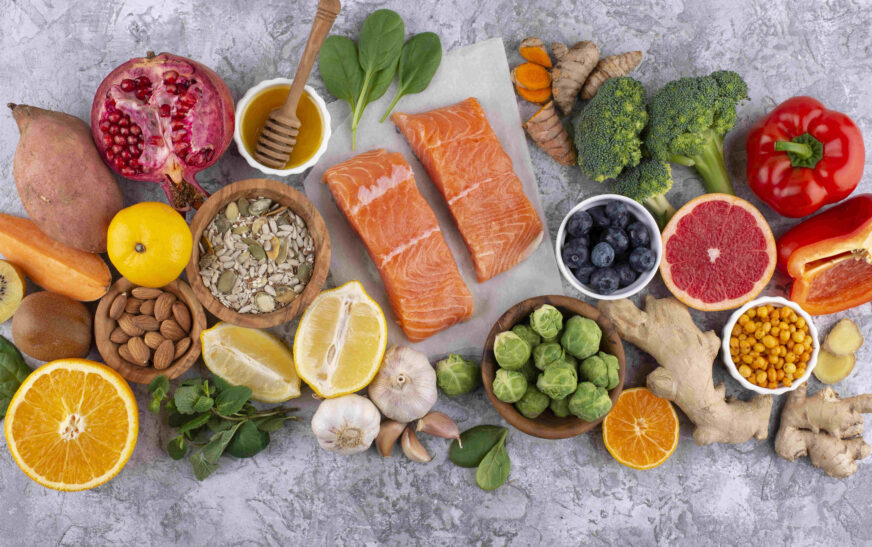The DASH diet is still considered one of the best heart healthy diets, as evidenced by the diet’s name, Dietary Approaches to Stop Hypertension. However, studies as well as research conducted on the DASH diet suggest that awareness and utilisation of the diet are rather low among the population. Understanding the finer details of the DASH diet and how to overcome its limitations can help individuals improve heart health and well-being, thus this article.
Understanding the Concept of the DASH Diet
In its simplest form, the DASH diet is aimed at addressing high blood pressure and the overall problem of bad cholesterol. The diet emphasises the consumption of:
Fruits and vegetables: The foods are sources of vitamins, minerals, and antioxidants and are generally good for the heart.
Whole Grains: For instance, brown rice, quinoa, and whole wheat bread contain fibre and other necessary nutrients.
-Lean Proteins: The recommendation includes poultry, fish, beans, and legumes while avoiding as much as possible red and processed meats.
Low-Fat Dairy: The use of low-fat yoghurt and cheese helps in addition of calcium and protein to ones diet.
-Nuts and seeds: These give you omega fatty acids, fibre, and protein, which are good for your heart.
Limited Sodium: This publication’s diet suggests a drastic cut on the levels of sodium, and the suggested level is 1,500 milligrams for a day.
That is why the mentioned components implemented in the DASH diet make not only a significant contribution to regulation of blood pressure but also positive effects in glycaemic control, cholesterol level reduction, and weight control as well.
Nutritional balance is the focus of this article.
Overweight and obesity, as well as different types of diets, have been reported to increase or decrease health risks depending on the type, including the DASH diet. The American Heart Association notes that about 48% of American adults suffer from high blood pressure, and only 24% of them have it adequately controlled. The statistics above are alarming, and it is the focus on nutrient-dense foods along with a list of diet rules that make the DASH diet a great example of how healthy eating habits can extend life and maintain heart health.
The paper also addresses various cross-cutting barriers of adoption through separate sections on the main cross-cutting barriers examined in the study.
Mutual ignorance and misconceptions
However, for the popularity of the DASH diet, there are some challenges. The following are the challenges: Most people do not have a clear vision of how they will be able to embrace the diet.
Common challenges include:
Educational Deficiencies: The person looking at the products (food) struggles to make sense of what is good for and what is bad for their heart, which manifests from poor nutrition education.
Habits and Lifestyle Changes: It is never easy to transform eating habits that have been in practice for a long time. Some people may hardly believe that their diet affects their health a lot and may find it difficult to change the food habits.
Accessibility of Ingredients: Consequently, while many may dream of eating healthy fresh fruits, vegetables, and whole grains, they may not afford such luxury in designated food deserts.
This paper discusses some of the best strategies that can be applied by various stakeholders as a means of translating research findings into practice.
To facilitate a smoother transition to the DASH diet, consider these practical strategies:
Set Incremental Goals: Instead of getting frustrated with big, sweeping changes, make small, achievable goals a target. For example, pushing up from a single portion of fruit or vegetable at each meal will do the trick.
Explore Flavour Alternatives: This is done free from the use of salt by using herbs, spices, and other related seasonings. Nursing that refers to the methods like roasting, grilling, or sautéing, the natural flavours can be released in foods.
Read Nutrition Labels: What consumers need to know is as follows: They also need to know about; Opt for products with a sodium content as low as possible, preferably products with no more than 140 mg of sodium per portion.
Designate Meatless Days: It would also help if you were to have a weekly ‘Meat Free Thursday’. This not only decreases the saturated fat intake but also brings more flexibility about plant-based protein sources.
Community Support: An approach from community resources like the dietitian, nutrition workshop, or cooking classes for creating a supportive environment to encourage people to undertake dietary changes.
Amazingly, this diet incorporates sustainable measures that make it easier to have a healthy and sound lifestyle every now and then.
It is important to remember that when embracing the DASH diet, it does not have the feel of burdensome exercise but a healthier way of living. Here are several additional tips to make the DASH diet sustainable:
Meal planning and preparation
Meal preparation can help the person who is planning to follow the DASH diet to have less of a hassle when planning the meals he/she or she is going to take. Meal preparation is a more efficient way of cooking since there is little or no compromise on control over what gets into the foods as well as the portions that are taken. Consider the following:
Batch Cooking: Cook in advance a large amount of healthy meals and divide them into portion sizes for one day only. This also ensures that people are able to get food that is healthy, as this eases access to a balanced diet.
Recipe Adaptation: Try incorporating different modifications to the frequently used recipes to follow the DASH plan. For instance, replace regular pasta with whole-grain pasta or replace ground meat with legumes in meals.
Exploring diverse flavours
Having many tastes can help the individual stay on the DASH diet. Experiment with different cuisines and cooking methods to keep meals exciting and flavourful.
mermaid
A: Meal Planning; B: Batch Cooking.
A –> C[Recipe Adaptation];
B->D [Prepare Nutrient-Dense Meals]
C –> E [Modify Family Favourites].
D——–> F [Enjoy Healthy Eating]
Conclusion
The DASH dietary plan remains a beacon of hope for people who wish to maintain healthy hearts or who want to control their hypertension well. The DASH diet is a diet based on nutrient-dense foods and has a clear pattern of consumption; it really can change lives. It has to be emphasised that in order to reduce the barriers regarding this educational theory, one needs the support of a community, as well as understanding that changing the existing school system and climate gradually is the only possible approach. These strategies may be effectively utilised to encourage the community to follow a healthy lifestyle and nutrition plan that improves the overall health.









